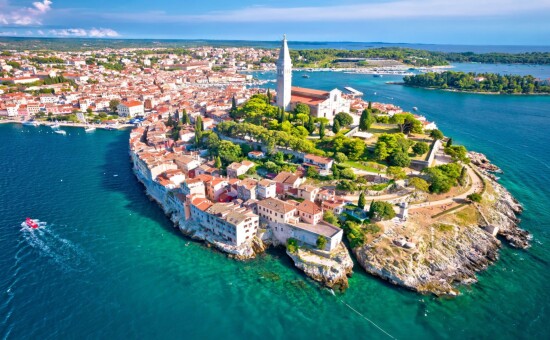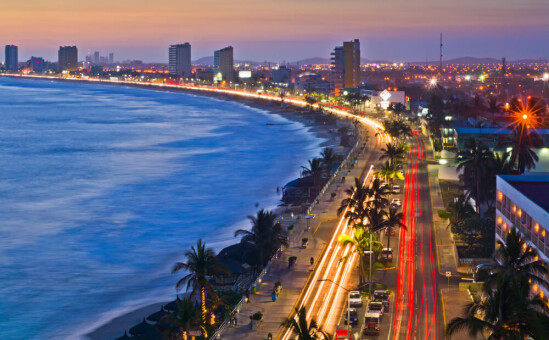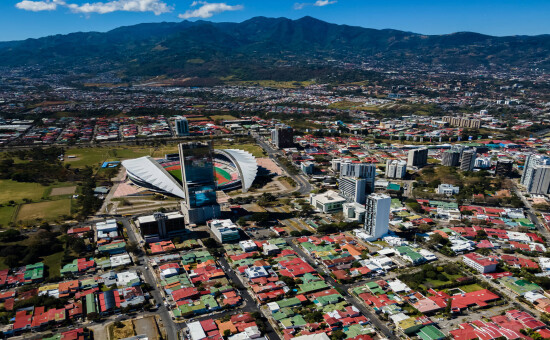Getting from Chiang Mai to Chiang Rai: A traveler review
Want to discover another authentic Lanna town? Then Chiang Rai in Thailand’s north is for you. Here’s what the trip from Chiang Mai to Chiang Rai is like.

Compared to its sister town Chiang Mai, locals are more relaxed in Chiang Rai, where tourism has yet to spike.
Despite the economic slump and COVID-19-related poverty, there are no taxi touts in Chiang Rai soliciting prospective clients brazenly. Cabbies welcome arriving travelers in a personable way, giving genuinely friendly smiles; waitresses talk with aplomb; and homeless tuk-tuk drivers sleep in the street on the backseat of their own, three-wheeled auto rickshaws.
Chiang Rai was founded in 1262 by King Mengrai, the first in the Lanna Kingdom, and has retained a strong Lanna identity. The capital of the Mengrai dynasty boasts authentic temples and art, distinctly northern Thai language, spicy food and a laid-back atmosphere.
Aware that Thailand’s northern city by the Mae Kok River offers little in terms of entertainment and nightlife, I looked forward to chilling out and started my bus journey from Chiang Mai to Chiang Rai.
Collecting my ticket at Chiang Mai’s bus terminal 3
“Hello, hello!” yelled some taxi drivers, gesturing and shouting offers to me like stockbrokers.

I’d arrived at Chiang Mai’s terminal 3 about an hour before the bus was supposed to leave and had barely got off the Grab taxi, an Uber-like car, but all these guys saw was a farang with two backpacks, apparently unsure where to go.
I’ll look for a café later, I thought to myself and entered the bus station, a skin-colored concrete block.

“Bangkok – Mochit, Mochit!” the ticket sellers hollered as though I was Thailand’s last traveler, but they stopped the moment I was walking towards Green Bus counter.
Green Bus was my tour operator, and the company made damn sure passengers knew how to fight COVID-19. There was a placard with instructions written in Thai only, though the pictograms were unmistakable. Wear a mask, use a sanitizer, keep your distance and whatnot, and before lining up, people had to scan the code to check in or jot down their contact details.

What I did not have to do was show my passport. Green Bus’s employee also didn’t want me to fill in the questionnaire that I’d had to fill out on another Green Bus trip from Chiang Rai to Chiang Mai. I remembered there was a slip with my seat number stapled to the questionnaire and began to wonder why I didn’t need that here in Chiang Mai. I expressed my surprise, and that prompted her to hand out the questionnaire eventually.
“Do you need my address here?” I asked.
“Yes!” she said, nodding with an expression on her face as though I’d just asked a silly question.
Be that as it may, she didn’t bother to staple the slip with my seat number to the questionnaire, so I said, “I need this one too,” and showed her a photo of that slip.
She wanted 30 baht for that ($1.00), and when I asked why, she explained matter-of-factly that this was the cost for printing. I pointed out that I didn’t need to pay that when I was traveling to Chiang Mai with Green Bus, and then she was like, “Show (Bookaway) voucher again.”
Her English was pretty much limited to, “Yes,” and, “Show voucher,” but I figured what she was trying to say was that I didn’t need that slip with my seat number.
“Alright then,” I said, “if they don’t need one, I don’t want one.”
“Yes,” she replied. Cool. I thanked her and took my leave.
Checking in again
The ticket seller hadn’t told me the platform number, but finding my bus wasn’t much of a challenge; there were only two coaches. It turned out that I didn’t need that slip with my seat number, though I did have to show my passport now.

A spruced up male host checked my temperature, took photos of my passport and my Bookaway voucher, and collected the questionnaire. It was nearly 6 pm, and we were supposed to leave in a few minutes. I was in a rush because I’d spent too much time munching a noodle soup at a nearby eatery and stocking up on snacks at the 7ELEVEN shop, and was eager to shoot a photograph of that temple I’d spotted around the corner.
“Mee haa na-tee, mai?” Have you got five minutes? I asked the host. He nodded.
Wat Ku Kham, a sacred temple that dates back to 1287 CE, had caught my eye with its brown-golden arched gate, which is adorned with gilded holy snakes and Buddha sculptures. To the gate’s left stands a golden, human-sized statue of Quan Yin, the most popular deity used in feng shui, and in the background beckons a Mon-style Buddhist stupa with a metallic covering made of copper plates, painted in gold. In a word – a plain sight for sore eyes!

There was no time to check out this chedi. Once I’d taken a few pictures, I dashed back and realized I needn’t have wasted time at the restaurant outside the bus station. Everything’s right there at the bus interchange: Snack shops, street food vendors, a quiet waiting hall with plenty of available seats, and a restroom.
The host motioned for me to get on the bus, directed me to my seat, and I was good to go.
Riding through the night
There was an announcement in Thai. I understood “mai sabai,” which translates to “feel unwell,” and figured they were reminding people they were not supposed to travel if they were feeling unwell and would have to tell the staff about it.

The coach was half-empty and everybody was wearing a facemask. Without it, they wouldn’t have let anyone board the bus. Nobody was speaking or eating. Stickers on the windows indicated that eating and drinking was banned to prevent the spread of COVID-19. This must’ve been the reason why the host didn’t serve anything aside from refreshing towels, not even bottles of water.
I put my backpack in the overhead, stowed my laptop bag in front of me, and took a seat. The leather seats were comfy and reclinable. They featured armrests that I could flip up, and there were footrests I could dismiss too when not in use. Also, there was a restroom.

The driver turned the ignition at 6:04 pm and pulled out of the terminal at dusk. It was totally quiet apart from the bus’s rattling sounds, and rather cool at what should’ve been 25 degrees, according to the AC. I put on my hoodie, grabbed for the earbuds and listened to MP3.
Watching the landscape roll past, I caught sight of golden pagodas and Buddha statues hiding behind trees on top of hills. Meanwhile, it was getting dark rapidly, and it was pitch-black inside the bus as the reading lights weren’t working.
The bumpy roads ran through hillscapes and brown fields in the middle of nowhere; I could make out less and less. But as we were approaching Chiang Rai, the jewel-encrusted temple of Wat Pong Sali and chromium spirit houses lit up the night like shooting stars, sparkling and glittering in all their beauty.
A few moments later, the bus stopped at terminal 2 at 9:07 pm, and the host came to collect the trash. Realizing that this wasn’t the final station, I sat down again.

It was 9:20 pm when we arrived at terminal 1. Shops were closed; there was scarcely a soul around, not to mention a foreigner; it was eerily quiet. But the life from the murals that portray Chiang Rai’s local color lifted my spirits. It reminded me what this provincial city is all about: Humbleness, taking it slowly, and savoring each moment as it comes.







